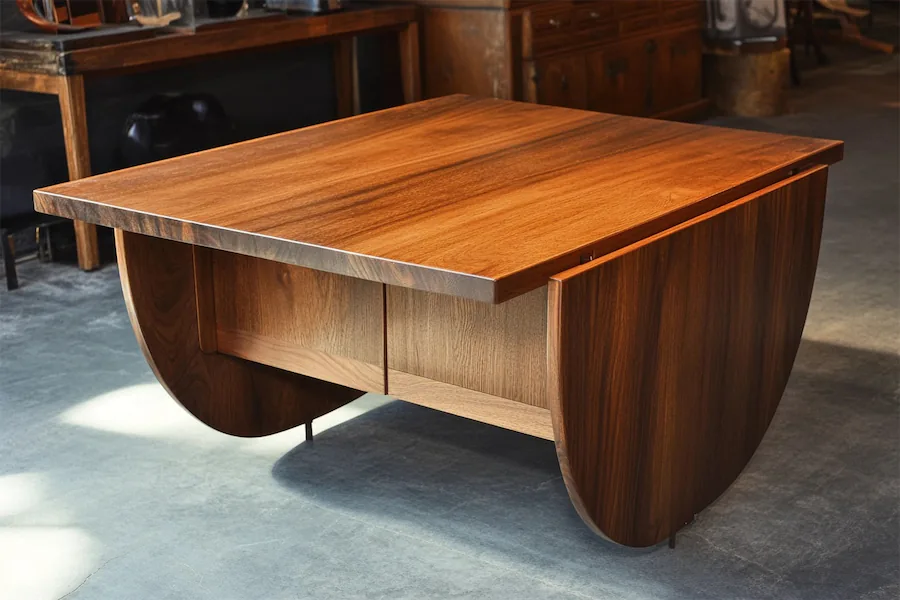A drop-leaf coffee table is a versatile piece of furniture designed with hinged sections, known as leaves, on either side of a fixed central surface. These leaves can be raised to extend the tabletop or lowered to save space, making drop-leaf coffee tables ideal for both compact and spacious living areas.
History and Origins of Drop-Leaf Coffee Tables
The concept of the drop-leaf table dates back to 16th-century England, with early examples like the gateleg table featuring hinged leaves supported by legs that swung out like gates. These designs were primarily crafted from sturdy oak and became popular due to their space-saving capabilities. Over time, the drop-leaf design evolved, leading to various forms, including the coffee table, which adapted the drop-leaf mechanism for lower-height tables suitable for casual settings.
Key Features of Drop-Leaf Coffee Tables
- Space Efficiency: The primary advantage of drop-leaf coffee tables is their ability to adjust in size. With leaves extended, they offer ample surface area for activities like serving snacks or playing games. When the leaves are folded down, the table occupies less space, contributing to a more open room layout.
- Design Variety: Drop-leaf coffee tables come in numerous styles, from traditional to modern, and are constructed from various materials, including wood and metal. This diversity allows them to complement different interior décors.
- Functional Flexibility: Beyond serving as a coffee table, the adjustable surface area makes these tables suitable for multiple uses, such as impromptu dining or workspace, enhancing their practicality in various settings.
Applications of Drop-Leaf Coffee Tables
Drop-leaf coffee tables are particularly beneficial in small living spaces, such as apartments or studios, where maximizing available area is crucial. Their adaptability also makes them suitable for larger homes, serving as multifunctional pieces in living rooms, home offices, or guest rooms. For instance, they can function as a compact coffee table daily and expand to accommodate guests during gatherings.
Considerations When Choosing a Drop-Leaf Coffee Table
When selecting a drop-leaf coffee table, consider the following factors:
- Size and Proportions: Measure the available space to ensure the table fits well both when the leaves are extended and when they are folded down. This ensures the table serves its purpose without overwhelming the room.
- Support Mechanism: Examine how the leaves are supported when extended. Some tables use brackets, while others employ additional legs or sliding mechanisms. Ensure the support system is sturdy and easy to operate.
- Material and Aesthetics: Choose a table made from durable materials that match your interior décor. The finish and craftsmanship should align with your style preferences and the room’s overall design.
Conclusion
Drop-leaf coffee tables blend historical design with modern functionality, offering a flexible solution for various living spaces. Their ability to adapt in size makes them a practical choice for those seeking to optimize space without compromising on style. By considering factors like size, support mechanisms, and materials, you can select a drop-leaf coffee table that enhances both the aesthetics and functionality of your home.
